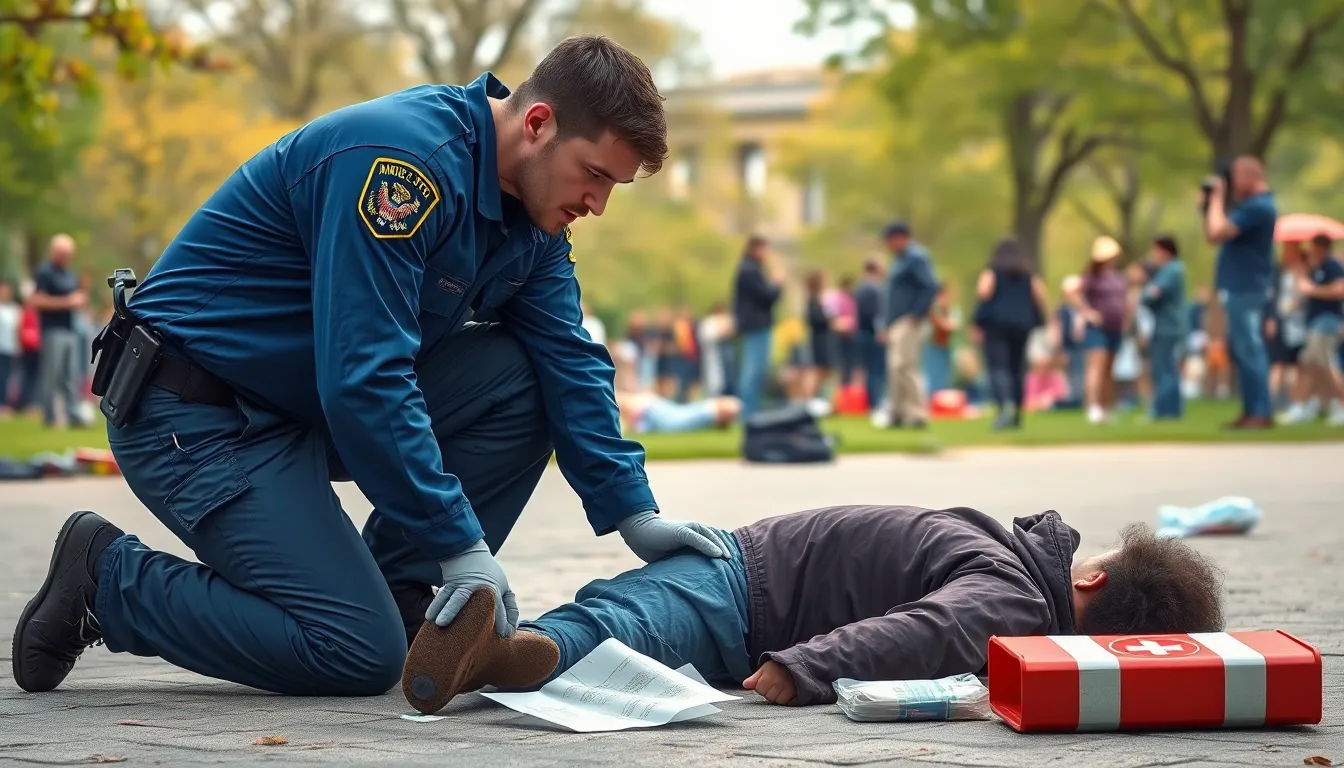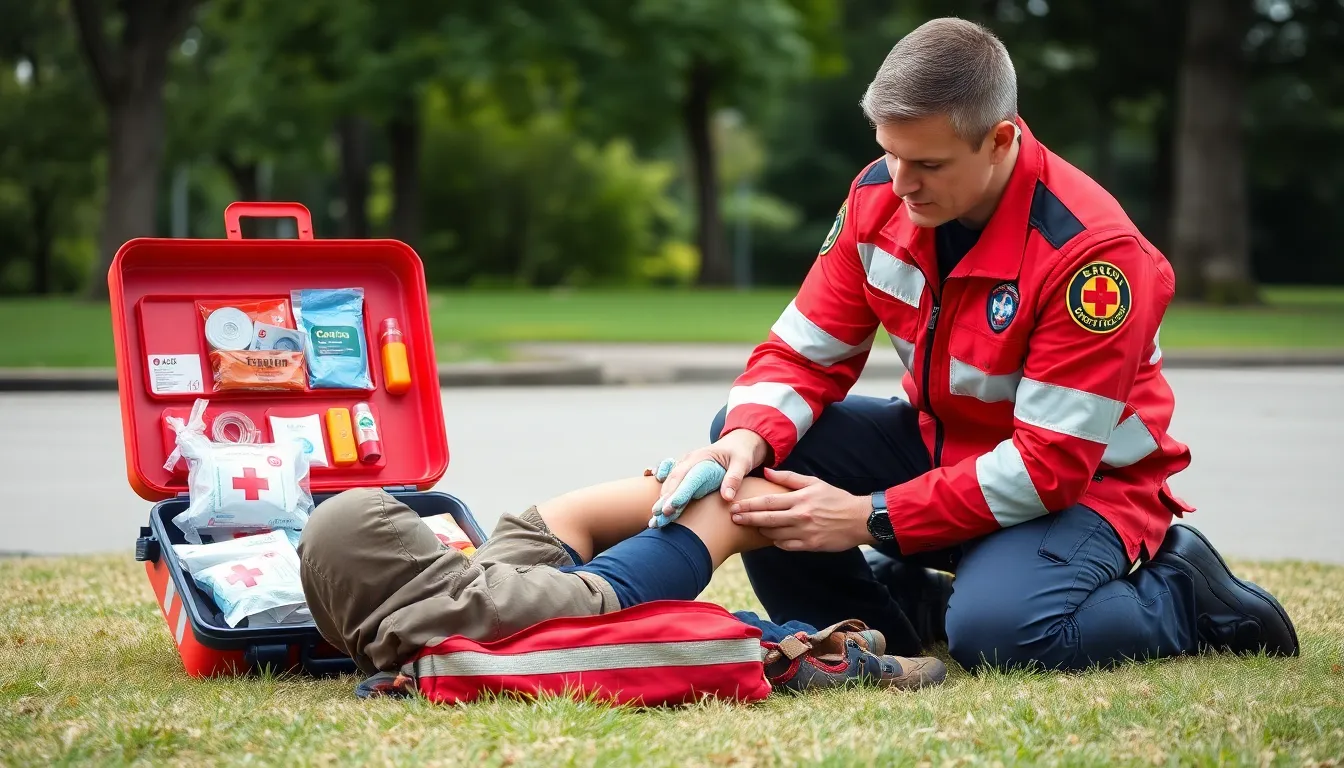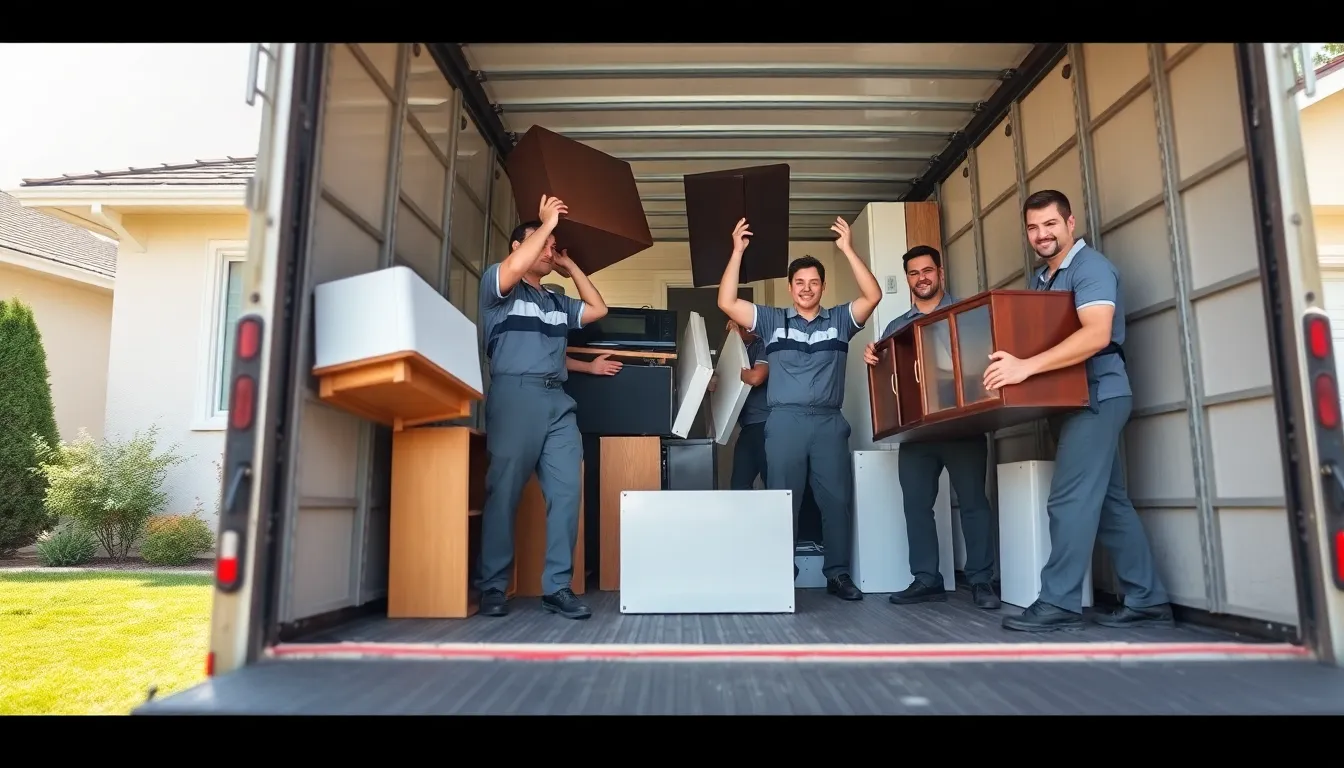In a world where accidents can happen faster than you can say “oops,” knowing first aid could be your superhero skill. Whether it’s a paper cut that feels like a sword wound or a sprained ankle that has you hopping like a kangaroo, first aid knowledge turns anyone into a calm, collected lifesaver.
Imagine being the person who saves the day with just a band-aid and a little know-how. It’s not just about being the hero; it’s about empowering yourself and others to handle emergencies with confidence. With a sprinkle of humor and a dash of practicality, mastering first aid can be as easy as pie—well, maybe not as easy as eating it, but you get the idea! So, buckle up and let’s dive into the essentials that could turn you from a bystander into a first aid aficionado.
Table of Contents
ToggleWhat Is First Aid?
First aid represents the initial assistance given to someone suffering from an injury or illness. This immediate response can stabilize a condition and prevent further complications.
Definition and Importance
First aid refers to the urgent care provided to individuals facing sudden medical situations. This intervention helps in managing conditions such as cuts, burns, or fractures, ensuring they don’t worsen. Understanding first aid empowers individuals to act decisively during emergencies. Having this knowledge can save lives, promote health, and enhance the confidence of anyone in a crisis.
Common Misconceptions
Many believe first aid only applies to severe injuries. In reality, it encompasses a wide range of situations, including minor ailments and everyday accidents. Some think first aid requires extensive medical training, but anyone can learn basic skills with straightforward instruction. Others feel they cannot perform first aid for fear of causing harm. However, most first aid interventions are simple and can significantly improve outcomes.
Basic Principles of First Aid

First aid involves performing critical actions in emergency situations. Understanding basic principles ensures effective responses to injuries and illnesses.
Assessing the Situation
Assessing the situation involves evaluating the surroundings for safety. Check the environment for potential hazards that could worsen the situation. Identify the number of victims needing assistance. Observing the individual’s condition provides valuable insights into the necessary care. Communicating clearly with bystanders can help gather needed information and resources. Taking a breath before acting allows for a focused approach to problem-solving and care delivery.
Prioritizing Care
Prioritizing care involves addressing the most critical needs first. Recognizing life-threatening conditions, such as severe bleeding or unconsciousness, guides immediate action. Treating injuries in order of severity ensures that the most pressing issues receive attention first. Giving first aid for minor injuries, like cuts and scrapes, follows after stabilizing critical conditions. Monitoring the effectiveness of interventions helps reassess priorities as the situation evolves. Communicating with emergency services can facilitate a smooth transition of care once they arrive.
Common First Aid Techniques
Learning common first aid techniques can equip anyone to handle emergencies effectively. These skills, while straightforward, play a crucial role in stabilizing individuals until professional help arrives.
CPR (Cardiopulmonary Resuscitation)
CPR is an essential lifesaving technique for cardiac emergencies. It combines chest compressions and rescue breaths to maintain blood flow and oxygenation. Initiate CPR immediately if a person is unresponsive and not breathing. Use firm, rhythmic compressions at a rate of 100 to 120 per minute, pushing down at least two inches deep. Deliver rescue breaths at a ratio of 30 compressions to 2 breaths. Calling for emergency assistance right away improves outcome chances significantly.
Control of Bleeding
Managing bleeding effectively can save lives during emergencies. First, apply direct pressure to the wound using a clean cloth or bandage. If the bleeding continues, do not remove the cloth; instead, add more layers and increase pressure. Elevating the injured area above the heart can reduce blood flow. If bleeding persists after 10 minutes, seek professional help. Keeping calm and focused during this process aids in maintaining the victim’s stability.
Treating Burns
Treating burns quickly helps to prevent further injury and discomfort. Rinse the affected area under cool running water for at least 10 minutes. This step reduces pain and minimizes skin damage. For minor burns, cover the area with a sterile bandage or dressing. Avoid using ice or very cold water, as this can worsen the injury. If blisters develop, do not pop them; instead, protect them with a clean dressing. For severe burns, seek medical assistance immediately.
First Aid Kits
First aid kits are essential for promptly addressing injuries and emergencies. A well-stocked kit can make a significant difference in the outcomes of various situations.
Essential Items to Include
First aid kits should contain critical supplies to manage injuries effectively. Adhesive bandages, gauze pads, and antiseptic wipes are necessary for treating cuts and abrasions. Include medical tape to secure dressings and scissors for cutting tape or clothing. Pain relievers like ibuprofen or acetaminophen help alleviate discomfort. Furthermore, it’s vital to add gloves to minimize infection risks, tweezers for splinter removal, and an emergency blanket for warmth. Each item plays a role in providing immediate care, ensuring the kit is comprehensive.
Maintenance and Accessibility
Maintaining a first aid kit ensures it’s ready when needed. Regularly check the kit to verify that supplies are in good condition and not expired. Replace used items promptly to keep the kit fully stocked. Choose a designated location for the kit, ensuring everyone knows where to find it in emergencies. Store kits in easily accessible areas, like homes, vehicles, and workplaces, to enhance readiness. Regular training on how to use the kit effectively also contributes to successful emergency management.
First aid knowledge is a powerful tool that equips individuals to respond effectively in emergencies. By mastering essential skills and understanding the basic principles of first aid, anyone can become a vital resource in critical situations.
Having a well-stocked first aid kit and knowing how to use it can make a significant difference in outcomes. Regular training and practice ensure that these skills remain sharp and accessible.
Empowering oneself with first aid knowledge not only boosts confidence but also fosters a sense of community responsibility. With the right preparation, anyone can be ready to make a lifesaving impact when it matters most.



